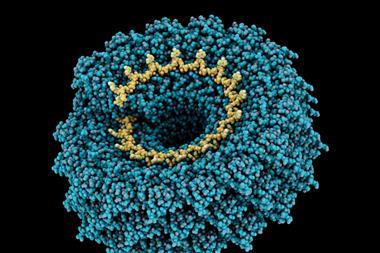We speak to Jason Sello about the hunt for new antibiotics, and Monique Simmonds explains the chemical role of botanical gardens

0.44 – No licensed treatment or vaccine is available for patients suffering from Ebola. But the World Health Organization (WHO) has advised that the use of experimental drugs is ‘ethically acceptable’ under the exceptional circumstances of the latest outbreak in West Africa – Doctors turn to experimental Ebola treatments
4.29 – Dutch scientists have built a simple model of viruses’ protective coats in an attempt to create viral mimics that could fight diseases, as opposed to causing them – No-frills coats set a trend for designer viruses
7.43 – Antibiotic resistance is a growing global problem. Jason Sello from Brown University in Providence, US, explains why the hunt for new antibiotics needs to break new ground – Pepping up antibiotics
14.35 – Although the ozone layer that protects life on Earth from harmful UV rays is showing promising signs of recovery, this being set back by unanticipated lingering pollutants – Environmental priorities stymie hunt for stubborn ozone depleter
19.28 – US scientists have pushed the range at which chemicals can be remotely identified beyond a kilometre by turning the samples themselves into lasers – Photon pinball identifies chemicals from afar
22.13 – When you walk through the gates of a large botanical garden, you might be surprised to learn that, amid the beautiful flowers and glorious trees, there’s a thriving hub of scientific activity. Monique Simmonds, director of the Kew Gardens innovation unit, explains how plants are an abundant source of new and interesting molecules – Chemistry in bloom
29.05 – General anaesthetics may extinguish consciousness through mysterious quantum biological effects that cause subtle changes in the electronic state of proteins, rather than through ‘conventional’ pharmacological mechanisms such as directly interfering with receptors or ion channels, new research proposes – Knock-out theory puts new spin on general anaesthesia
32.34 – Lead stannate, Pb2SnO4, has been identified as the culprit responsible for disfiguring masterpieces by Rembrandt, John Singer Sargent and Johannes Vermeer – Lead ‘soaps’ behind iconic artwork damage uncovered












No comments yet